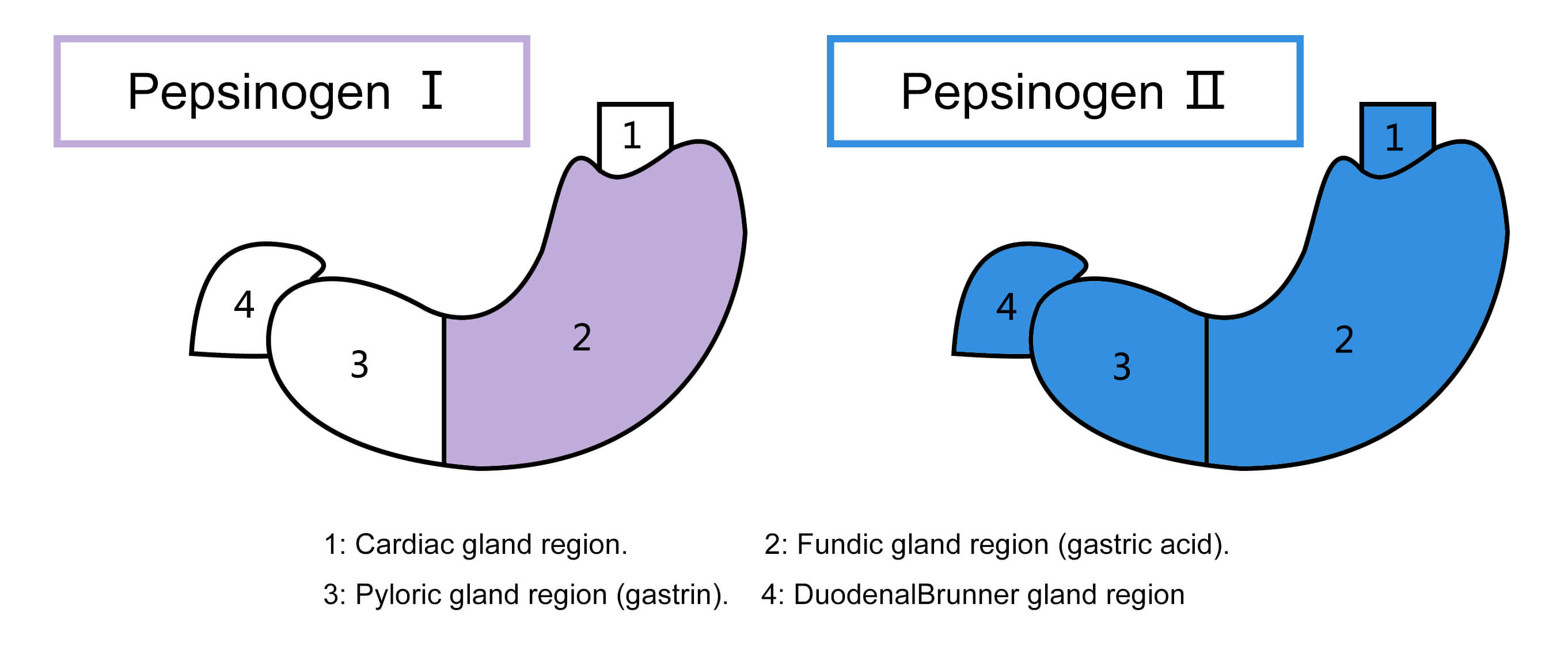Get a Quote
Anti- PG I antibody (![]() Datasheet)
Datasheet)
| Source | Mouse monoclonal antibody,cultured in vitro | |
| Platforms | Immunofluorescence, Chemiluminescence, Colloidal gold and Immunological latex turbidimetry | |
| Catalog number | K50f4 | K56t1 |
| Applications | Capture | Detection |
| Buffer | 1x PBS | |
| Purity | Purity>98%,purified by Protein A/G chromatography | |
| Storage instructions | Upon delivery aliquot and store at -20°C. Avoid freeze / thaw cycles. | |
PG I protein (![]() Datasheet)
Datasheet)
| Description | PG I protein (41.1kD) with His-tag, cultured in vitro |
| Applications | Calibrator and quality control product |
| Catalog number | K3916 |
| Source | Mammalian cell |
| Purity | >90% as analysized by SDS-PAGE |
| Buffer | 1 x PBS,pH 7.4 |
| Storage instructions | Store at 2 - 8°C (35.6 – 46.4°F) for up to 3 years. |
| Sequence | IMYKVPLIRK KSLRRTLSER GLLKDFLKKH NLNPARKYFP QWEAPTLVDE QPLENYLDME YFGTIGIGTP AQDFTVVFDT GSSNLWVPSV YCSSLACTNH NRFNPEDSST YQSTSETVSI TYGTGSMTGI LGYDTVQVGG ISDTNQIFGL SETEPGSFLY YAPFDGILGL AYPSISSSGA TPVFDNIWNQ GLVSQDLFSV YLSADDQSGS VVIFGGIDSS YYTGSLNWVP VTVEGYWQIT VDSITMNGEA IACAEGCQAI VDTGTSLLTG PTSPIANIQS DIGASENSDG DMVVSCSAIS SLPDIVFTIN GVQYPVPPSA YILQSEGSCI SGFQGMNLPT ESGELWILGD VFIRQYFTVF DRANNQVGLA PVAHHHHHH |
| SDS-PAGE | 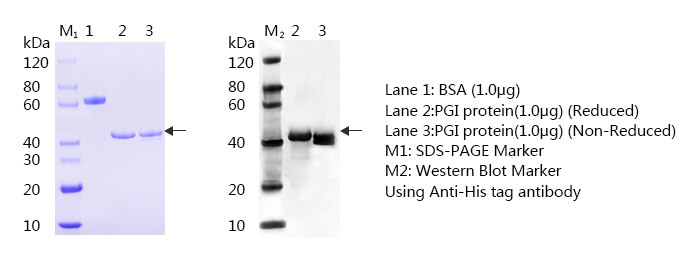 |
Antibody Product Information
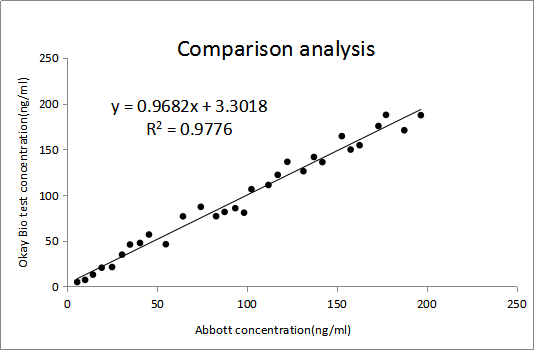 Fig. 1 Clinical sample analysis
Fig. 1 Clinical sample analysis| Sample (ng/ml) |
Test 1 | Test 2 | Test 3 | Average (ng/ml) |
RSD | Standard | |
| Batch 1 | 26.59 | 23.54 | 25.78 | 28.43 | 25.92 | -2.53% | ±15% |
| 78.34 | 77.23 | 75.98 | 79.12 | 77.44 | -1.14% | ||
| Batch 2 | 26.59 | 25.22 | 24.27 | 25.8 | 25.10 | -5.62% | |
| 78.34 | 79.69 | 78.94 | 75.34 | 77.99 | -0.45% | ||
| Batch 3 | 26.59 | 27.89 | 27.94 | 27.2 | 27.68 | 4.09% | |
| 78.34 | 75.29 | 77.38 | 76.62 | 76.43 | -2.44% |
 ) ×100% (CV < 15% as indicated in the following table)
) ×100% (CV < 15% as indicated in the following table)| Low Value (26.59ng/ml) |
High Value (78.34ng/ml) |
||
| Test 1 | 27.12 | 82.01 | |
| Test 2 | 25.15 | 82.02 | |
| Test 3 | 27.98 | 76.40 | |
| Test 4 | 26.74 | 80.58 | |
| Test 5 | 29.18 | 75.67 | |
| Test 6 | 28.41 | 81.85 | |
| Test 7 | 24.24 | 81.94 | |
| Test 8 | 28.62 | 81.64 | |
| Test 9 | 27.70 | 85.61 | |
| Test 10 | 26.78 | 73.28 | |
| Average (ng/ml) | 27.19 | 80.10 | |
| SD | 1.55 | 3.75 | |
| CV | 5.70% | 4.68% | |
| Standard | ±15% | ||
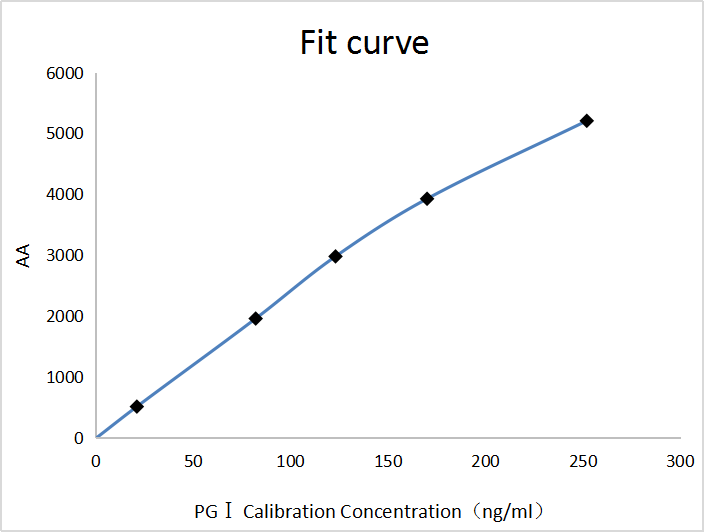 Fig. 2 Calibration curve
Fig. 2 Calibration curve| Theoretical value (ng/ml) | Measured value 1 | Measured value 2 | Average |
|---|---|---|---|
| 0.00 | 2.1 | 3.54 | 2.82 |
| 25.00 | 29.22 | 27.02 | 28.12 |
| 50.00 | 55.8 | 52.8 | 54.3 |
| 100.00 | 108.25 | 107.36 | 107.805 |
| 200.00 | 208.76 | 206.74 | 207.75 |
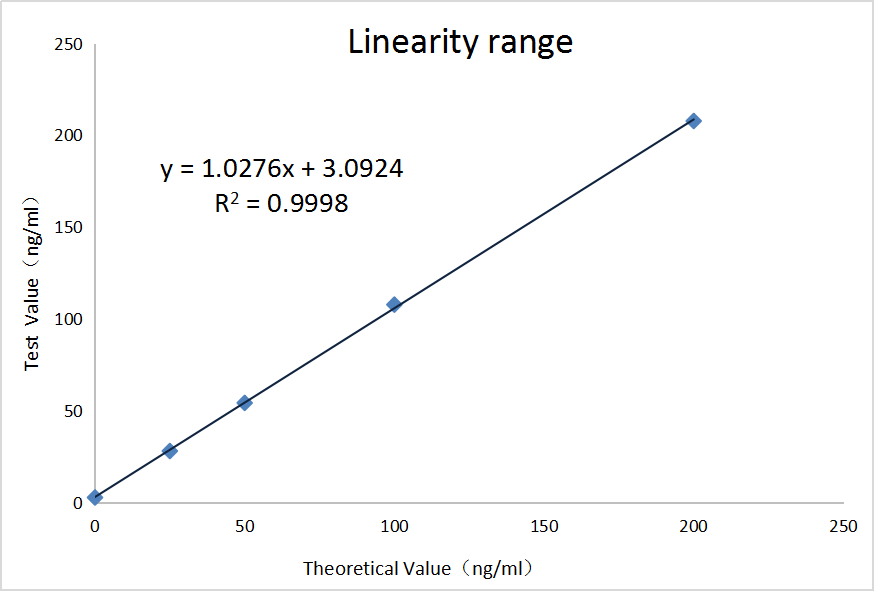
Fig. 3 Linearity range
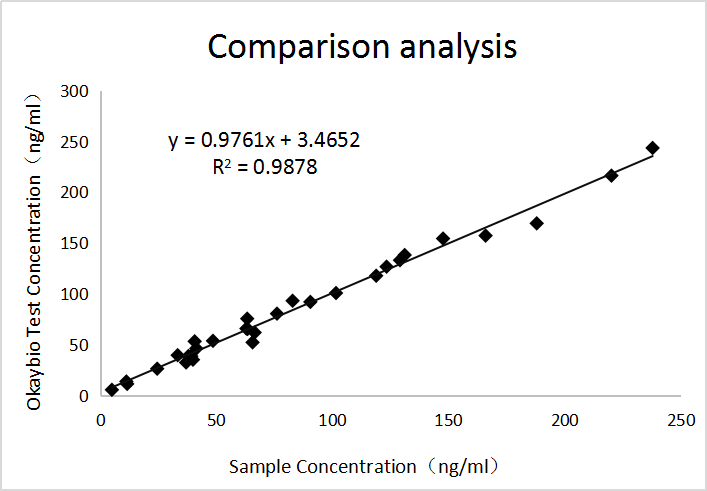 Fig. 4 Calibration curve
Fig. 4 Calibration curveDescription
